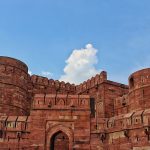- Srinivas Ramanujan (1887-1920)
- India’s greatest mathematical genius was born in Tamil Nadu on 22 December 1887.
- In 1911, he published a brilliant research paper on Bernoulli Numbers.
- He was the second Indian to be elected Fellow of the Royal Society of London and the first Indian to be elected Fellow of Trinity College.
- Chandrasekhara V. Raman (1888-1970)
- He won the Nobel Prize for Physics in 1930. He was the first Asian to receive this award.
- He put forward the Raman Effect theory.
- When a beam of monochromatic (having a single colour) light passes through a transparent substance, it scatters. Raman studied the broken light.
- Jagdish Chandra Bose (1858-1937)
- For his paper on “The Electromagnetic Radiation and Polarization of Electric Ray”, he was made a Knight in 1917 and Fellow of the Royal Society of London in 1920. He was the first Indian scientist in Physics to receive this honour.
- Dr Bose is famous all over the world as the inventor of the Crescograph (a device for measuring growth in plants) that can record even the millionth part of a millimetre of plant growth and movement.
- Homi Jehangir Bhabha (1909-1966)
- He is called the father of Indian Nuclear Science.
- India’s first atomic research centre, now called Bhabha Atomic Research Centre (BARC) was established at Trombay in Maharashtra. India’s First atomic reactor, Apsara was also established under his expert guidance.
- Dr. Vikram Ambalal Sarabhai (1919-1970)
- The main personality behind the launching of India’s first satellite Aryabhatta.
- He directed the setting up of the Thumba Equatorial Rocket Launching Station (TERLS).
- Dr. A.P.J. Abdul Kalam
- At Vikram Sarabhai Space Centre, he developed the Satellite Launch Vehicle (SLV 3), which put the satellite Rohini into orbit.
- In 1982, as Director, of the Defence Research Development Organisation (DRDO), he was given the responsibility of the Integrated Guided Missile Development Programme (IGMDP).
- He developed five projects for defence services – Prithvi, Trishul, Akash, Nag and Agni.

